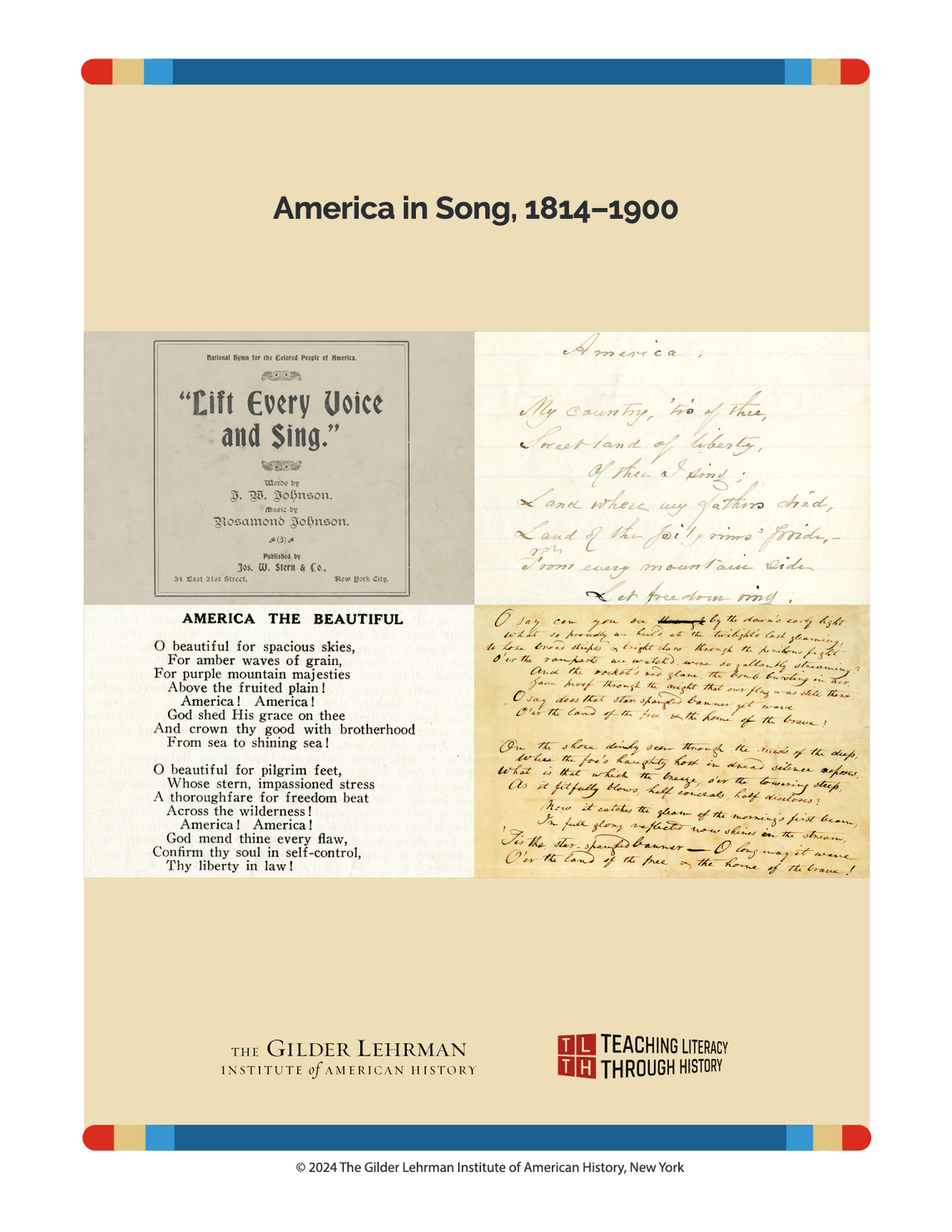Lesson by Tim Bailey
Essay by Tikia K. Hamilton, Loyola University Chicago
Grade Level: 3–5
Number of Class Periods: 4
Primary Theme: American Music

The four lessons in this unit explore songs written by Americans about America in the nineteenth century. Students will read lyrics of four songs and brief essays placing those songs in historical context. You will assess students’ understanding of the imagery and meaning of those songs through class discussions and activity sheets.
Lesson Plan Authors: Tim Bailey
Historical Background Essay by: Tikia K. Hamilton, Loyola University Chicago
CCSS.ELA-LITERACY.RI.4.2: Determine the main idea of a text and explain how it is supported by key details; summarize the text.
CCSS.ELA-LITERACY.RI.5.5: Compare and contrast the overall structure (e.g., chronology, comparison, cause/effect, problem/solution) of events, ideas, concepts, or information in two or more texts.
CCSS.ELA-LITERACY.RI.5.9: Integrate information from several texts on the same topic in order to write or speak about the subject knowledgeably.
CCSS.ELA-LITERACY.SL.4.1D: Review the key ideas expressed and explain their own ideas and understanding in light of the discussion.
CCSS.ELA-LITERACY.SL.5.1.D: Review the key ideas expressed and draw conclusions in light of information and knowledge gained from discussions.
According to the lyrics, what are some American ideals?
According to the lyrics, what is special about the United States?
According to the lyrics, what do American people owe to each other?
According to the lyrics, what do American people owe to their country?
According to the lyrics, what does the United States owe to each citizen?
Francis Scott Key, “The Star-Spangled Banner,” 1814.
Samuel F. Smith, “America” (“My Country, ’Tis of Thee”), 1831.
Katharine Lee Bates, “America the Beautiful,” 1893.
James Weldon Johnson and Rosamond Johnson, “Lift Every Voice and Sing: National Hymn for the Colored People of America,” 1900.